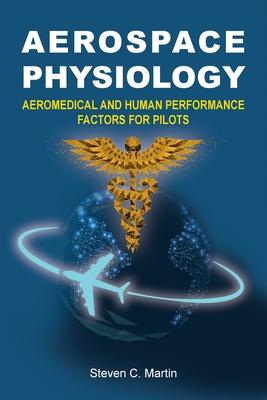Aerospace physiology (sometimes called flight or aviation physiology, human factors, or aeromedical factors) is the scientific discipline studying the effects of flight conditions on human physiological and cognitive systems, teaching aviators to work and function at peak efficiency in the abnormal environment of flight. This information is introduced to pilots throughout their initial training including hypoxia, spatial disorientation, visual illusions, fatigue, trapped gases, and many others. The problem is all of these issues still create problems, as well as fatalities, for pilots on a regular basis even today. Why? Pilots may know about the information, but fail to completely understand it. This book will transform a pilot's potential misinterpretation of this subject matter into definitive action on the flight deck.
The newest, most authoritative, and comprehensive resource on this critical subject is "Aerospace Physiology: Aeromedical and Human Performance Factors for Pilots," a pilot's number one source for enhancing safety-of-flight for all pilot experience levels. As well as providing practical and realistic human performance information for private and professional pilots, this book has been specifically written for use in academic settings unlike other books on this subject matter. This book is currently the preferred text on flight physiology for the world-renowned University of North Dakota's John D. Odegard School of Aerospace Sciences.
The book contains 22 chapters, discussing each topic thoroughly using the primacy of learning format and in an understandable manner, complete with chapter core competency questions. Each topic is covered in detail with environmental causes, potential physiological & cognitive responses, followed by effective and proven anticipation & mitigation strategies. The book uses the most current research and experience-based information combined with current incidents and accidents illustrating how these issues present themselves in real flight environments as well as how those accidents may have been prevented. The information in this book is based on Mr. Martin's 30 years of military and civilian aviation experience, and is modeled after the US Air Force's Physiological Training Program for pilots and the comprehensive European Union Aviation Safety Agency's (EASA) flight physiology human performance standards.
Using Aerospace Physiology as your resource for aerospace physiology information will elevate the standard of training to its highest levels regarding this crucial knowledge.
